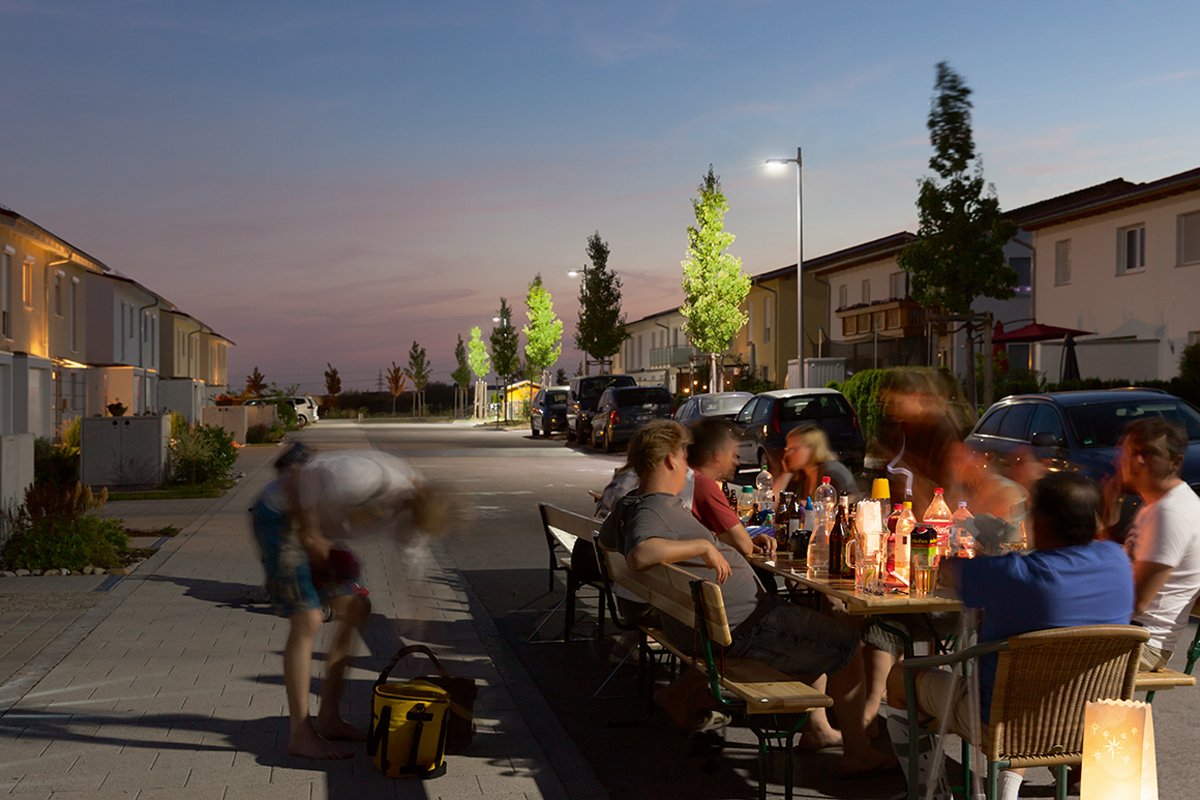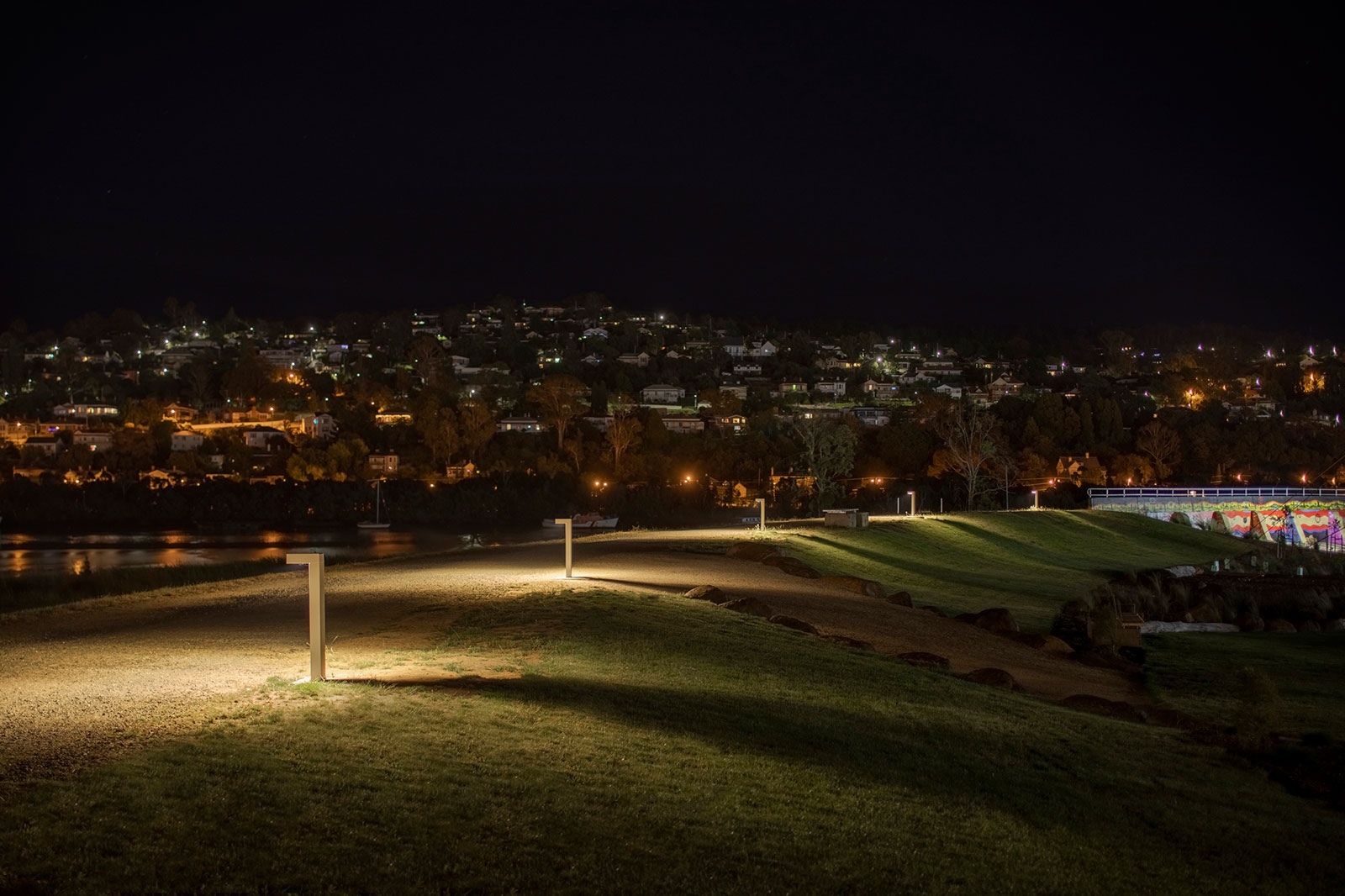





WE-EF luminaires consider the night environment WE-EF has a consistent focus on sustainability – from luminaires that are designed to last and environmentally-friendly production to the ultimate recycling as the majority of the materials used are recyclable. However, it is during their use that the luminaires have the greatest impact on the environment, due to […]
WE-EF has a consistent focus on sustainability – from luminaires that are designed to last and environmentally-friendly production to the ultimate recycling as the majority of the materials used are recyclable. However, it is during their use that the luminaires have the greatest impact on the environment, due to the power they consume over the years and the way that light has a direct impact on people and nature. It is here that a paradigm shift is needed – greater awareness of the way that light is used at night.
As in many other areas of modern life, realisation is gaining ground in the area of lighting that “more and more” – in this case, outdoors light – is not a sustainable strategy and endangers ecosystems that are the basis of life. The new way of thinking about lighting looks at the acute visual needs that need to be met in an overall context. This is one element of a larger, complex equilibrium, balanced with the non-visual, biological effects of light on humans as well as the impact on the natural environment, animals and plants, and the night sky.
This new approach leads to changed planning processes and lighting concepts, which in turn make new demands on technologies and luminaires. At WE-EF, light quality, efficiency and precision have always been given priority over pure quantity. As a manufacturer, this enables WE-EF to offer planners and users customised tools for the conscious use of light at night.





A new approach to outdoor lighting Conservationists now give planners and users of lighting clear recommendations, for example, in the form of the “five principles for responsible outdoor lighting” from the International Dark-Sky Association (IDA) and the Illuminating Engineering Society (IES). These are:
● Useful – all light should have a clear purpose
Before any outdoor luminaires are installed or replaced, ask: Is this lighting needed? How will lighting affect the surroundings, what impact will it have on the environment and wildlife? Are retroreflective or self-illuminating markings and signs also an option? How can the need for permanently installed outdoor lighting be reduced?
● Targeted – light should be directed only to where needed
Well-shielded luminaires that are carefully directed downwards produce less unnecessary stray light.
● Low light levels – light should not be brighter than necessary
Wherever possible, normative specifications should not be exceeded. Illuminated surfaces also play a role: some materials reflect more light back into the night sky than others.
● Controlled – light should be used only when it is useful
Controls such as timers or motion detectors ensure that light is available when it is needed, dimmed when possible and turned off when not needed.
● Light colour – as warm as possible
Limit the amount of shorter wavelength (blue-violet light) to the least amount needed.
Source: https://www.darksky.org/our-work/lighting/lighting-principles/
It is clear that the responsibilities of principals, planners and lighting manufacturers are closely interlinked. Joint efforts are needed to successfully implement these demands without neglecting visual and aesthetic requirements.


Night-sensitive lighting: WE-EF’s contribution
As a manufacturer specialising in high-precision LED optics, WE-EF is able to offer certified luminaires that comply with Dark Sky regulations in many regions of the world – for example, in Australia. The portfolio ranges from bollards to luminaires for open spaces and street lighting in a wide variety of power ratings. The luminaires are specifically designed to prevent user and installation errors such as incorrect alignment or orientation. Precision and minimising stray light are a focus of all lighting technology developments. For example, WE-EF light shields were developed to this end as elements integrated in the optics of existing products, in order to meet strict Dark Sky requirements.
Alongside the street and area lighting luminaires, WE-EF has a wide range of gobo projectors in different sizes and power ratings. These ratings enable light to be projected onto buildings or facades precisely and without stray light for impressive light effects, with a minimal impact on the environment. A well-proven CAD process is used to produce the individual gobo templates for customers.
WE-EF also has extensive experience in the design and production of project-specific luminaires using colour temperatures with an even lower blue component than the warmest standard colour temperature of 2700 K. For example, LED modules with extremely warm amber (PC) LEDs have been used in sensitive projects such as the “Penguin Parade” in an Australian nature reserve. Thanks to WE-EF’s flexibility and a high level of vertical integration, the company is the ideal partner for projects worldwide where special demands on environmental protection call for customised product and light solutions.



Operating electronics for control and networking, standard-compliant interfaces such as DALI and Zhaga, and systems such as Eco Step Dim® for demand-responsive switching and dimming, are available for WE-EF luminaires. This means that there are no technical limits to smart, environmentally-friendly and energy-saving control scenarios.
In sensitive areas close to nature, environmental experts are increasingly fitting the lighting needed for paths or open spaces with light sources in warm colours wherever possible, to minimise the impact on flora and fauna. WE-EF has therefore specifically developed the concept of “wild-light” as a synthesis of the demands on nature conservation and the requirements of human users – an integrated system of adaptive lighting technology, sensors and connectivity. At the heart of the concept are new LED modules for street and area lighting luminaires combining LEDs in more nature-friendly 2200 K with LEDs in warm white/3000 K LED. Motion sensors activate the 3000 K channel only when passers-by or vehicles are within their range. At other times, the lighting is reduced to a low level of 2200 K to provide orientation from a distance – or else it is completely switched off. This results in maximum protection of the environment and additional energy savings. Possible areas of application include paths through parks or car parks in nature conservation areas.
Respect for the night and its ecosystems
“Our technical expertise and our respect for the night and its ecosystems make us the right partner for future-oriented lighting projects,” is how Thiemo Cordes sums up the company’s philosophy. The WE-EF CEO says that this will also be a defining feature of the product strategy in years to come, underlining the company’s leading role in sustainability.



Loading products...